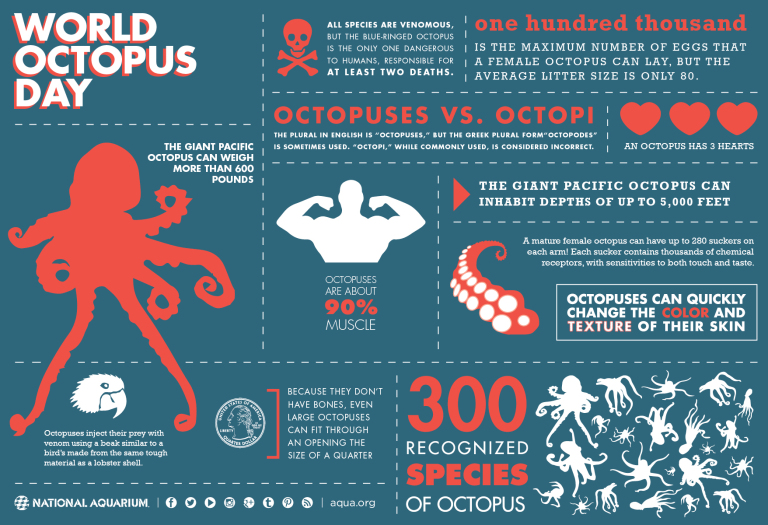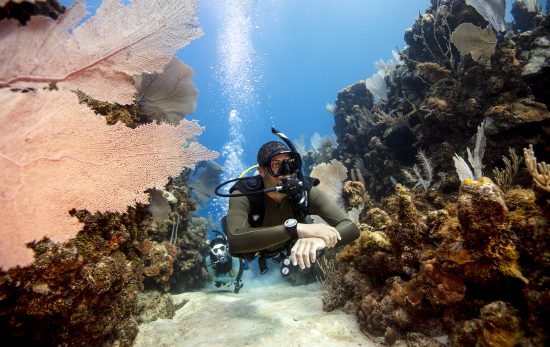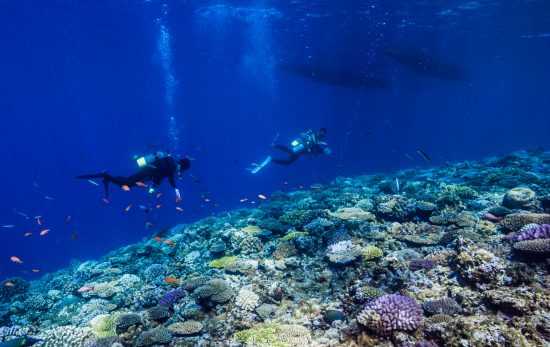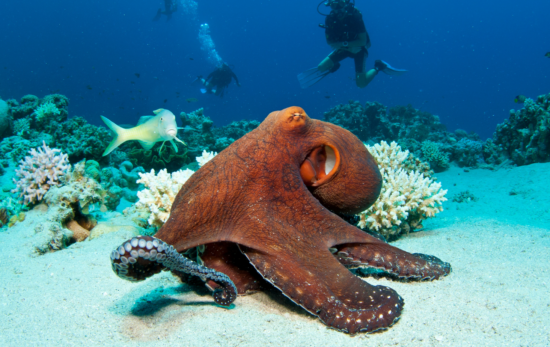Mythical, magnificent and a little malevolent, the giant Pacific octopus is one captivating cephalopod. If you’re not already in awe of this cold water creature, read on to learn more.
The giant Pacific octopus, also known as “GPO” is the largest of all octopuses . Their arm span averages 4- 9m/14-29 ft and they weigh 15-20 kg/33-44 lbs. They also live longer than other types of octopus – up to five years.
Baby GPOs are about the size of a grain of rice and increase their body weight up to two percent each day. That’s about the same as 79 kg/175 lb person gaining 1.5 kg/3.5 lbs every day – but remaining 90 percent muscle.

You can dive with giant Pacific octopuses off the west coast of North America (Alaska down to Northern California), Korea, Japan and Russia. GPOs can change color in a fraction of a second, so sometimes it’s easier to find piles of shells (called a midden) near the octopus’ den first, then look for an octopus nearby. Never stick your hand or any other object into an octopus den.
A giant Pacific octopus will eat just about anything it can get its arms around, including crabs, clams, sharks, fish, other octopuses and even birds. GPO predators include seals, sharks, larger fish and of course people. About 3.3 million tons of giant octopuses are harvested from the ocean each year, for food and fishing bait. Their conservation status is unknown.
Octopuses are highly intelligent. GPOs can open jars, solve puzzles, use tools and recognize faces. In her book The Soul of an Octopus, author Sy Montgomery describes GPOs that single out aquarium staff to drench with a blast of water.
Giant Pacific octopuses breed just once in their lifetime, and it’s one of the last things they do. After mating, males stop eating and females stop hunting. Females lay thousands of eggs in their den and guard them with her life. In about six months, the eggs hatch and the female dies. Most of the offspring will be eaten before they can mature.
Each year the Seattle Aquarium hosts an octopus blind date. The animals are separated until Valentine’s Day (14 Feb). Staff turn the lights down low, put on some romantic music, and remove the barrier separating the animals. Once the date (or disaster) is over, both octopuses return to Puget Sound.
GPO Fun Facts:
- The largest GPO ever recorded was 9m/30ft across and weighed more than 272kg/600lbs
- If an arm is lost or severed, the octopus can re-grow up to one-third of the original arm, including suckers, in about six weeks
- GPOs use their suction cups to taste and smell in addition to gripping objects
- Giant Pacific octopuses don’t have any bones, but they have a beak similar to a parrot
- The octopus can squeeze through any opening large enough for its beak
- The octopus is a master of mimicry, but its eyes lack color receptors
- GPOs have three hearts and (arguably) nine brains
What? Do they have nine brains or not?
Octopuses have a central brain (shaped like a donut) that controls their nervous system overall, but they also have a cluster of nerve cells in each arm. These clusters allow the arms to work independently of each other and the central brain. If an arm is cut off from the octopus’ body, it can function for up to an hour – picking up food and attempting to deliver it to a mouth which is no longer there.
The total number of neurons in these arm brains is greater than the donut brain. So does a giant Pacific octopus have nine brains? We’re eight brains short of figuring this one out.
We hope you get to see one while diving, but if you’re stuck inside, you can always:
Learn why you should say Octopuses not Octopi
Read more articles about octopuses
Tell a truly terrible octopus joke



